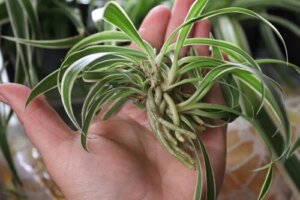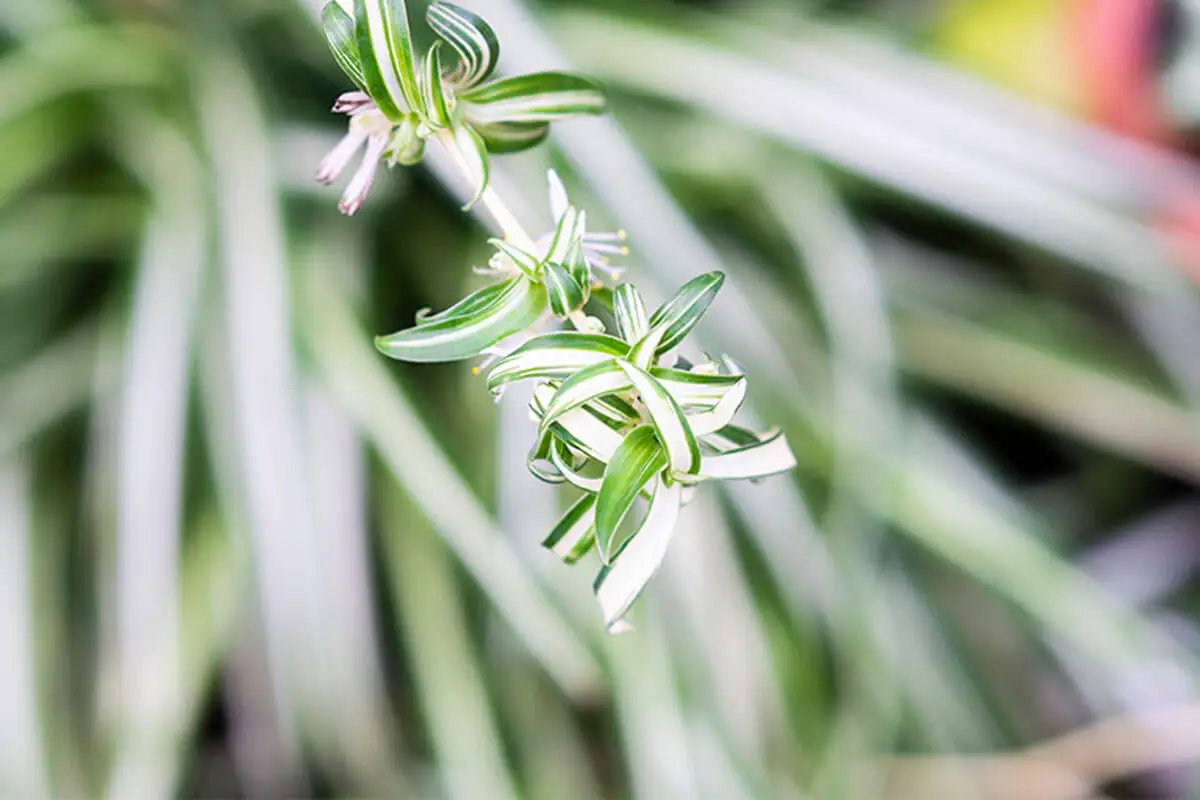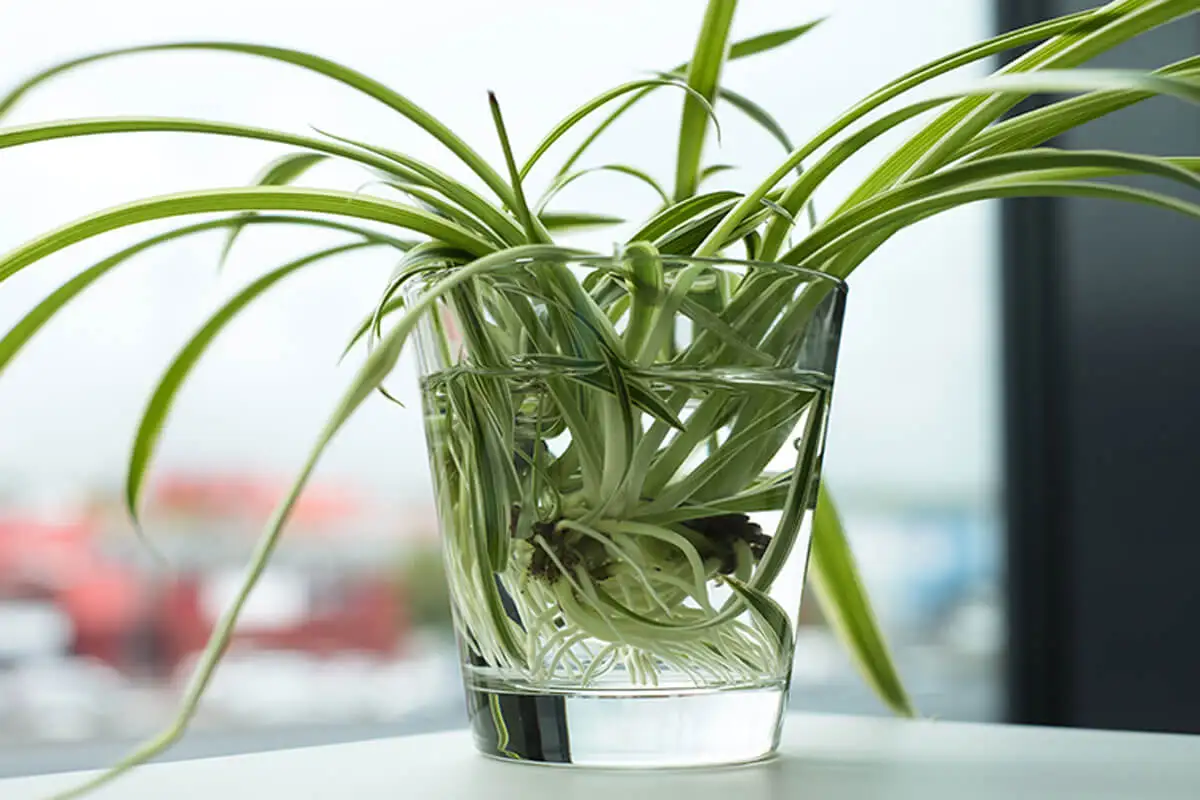How to Care For and Propagate a Spider Plant

Did you know that you can use the baby spider plant to start a spider plant propagation process? This process is very simple and can be done in soil or in water, depending on your preferences. So, keep reading because we are going to tell you how to care for and propagate these lovely plants!
Tools to propagate spider plants
Here’s what you’re going to need:
- Water
- Pots
- Substrate
- Gardening shears
- Baby spider plants
- Cups or containers
- Fertilizer to retain soil moisture
Like this article? You may also like to read: 9 Tips for Caring for Indoor Plants
Propagate your spider plant in the soil

The spider plant is also known as the “ribbon plant” or “bad mother”. This name is given to it because its offspring grow away from it.
It is precisely these shoots that are used to start propagation. Thus, if you want to grow your new spider plants, then, follow the steps we are going to share with you.
1. Cut the shoots that you’re going to propagate
The first step you must follow to propagate your spider plant is to cut the shoots you are going to grow. To do this, you will need to take them from the long branches, where the spider mites grow.
Once you identify them, cut them off, making sure to keep the bumps they have. This is because it’s in this area that there are incipient roots that will either take root in the soil or develop in the water, depending on what you have decided to use to grow them.
2. Place the seedlings in a glass of water
If your baby spiders do not have good roots developed, they should be placed in a glass or container of water. Furthermore, check each day that the roots are growing and top up the evaporating water, without letting the leaves become submerged.
Note that this step may take a couple of weeks. So, make sure to find a location with direct sunlight. If the sprouts you cut already have roots, however, then your skip this step.
3. Plant your spider plants in the soil
With the spider plants ready, it’s time to plant. Then, you need to fill the pots where you are going to propagate with quality soil that retains good moisture. The ideal substrate should contain pine bark, vermiculite, peat, or perlite.
Similarly, you must ensure that the pots have good drainage. If the ones you have do not have enough holes, then make new ones with the help of a hot screwdriver. Thus, remember to place a tray underneath to retain the water.
Once you have the pots filled with soil, dig a hole in the center and place the baby spiders. Their roots should be well covered. To do this, fill the hole you made with soil and press down to firm the seedling.
4. Water the ribbons immediately
Water the plants immediately after you plant them. The amount of liquid you should put in should be enough until it comes out of the drainage holes.
Be careful! Here comes a trick that you should not overlook: make sure to discard the water left in the tray.
This tip is very important because, although the substrate of the love ties should be moist, it’s considered an excess to allow it to continue absorbing from the trays. This can cause the roots to rot and your spider plant to die.
From this point on, water every other day until the growth evens out. Then, every time you notice that the substrate dries out, water again to maintain the necessary moisture.
We think you may also like to read this article: How to Make Homemade Hanging Planters for Your Plants
Grow your spider plant in water

If you don’t want to propagate your spider plant in soil, propagate it in water. This is a good option to decorate your home or office.
Here’s what you need to do:
- Prepare a glass or container with water, where you are going to place your small plants.
- You will notice that the baby spiders grow on sticks that come out of the mother plant. Cut them off, leaving a good portion of this stem.
- Use the stem to place the plant in the glass and keep the leaves from touching the buds. If the shoots have good roots, you should adjust the water so that it barely touches the tips of the shoots. If they don’t, raise the liquid level so that the base of the plant touches it.
- Change the water daily so that fungus doesn’t appear.
- In about 15 days, your plants will be rooted.
- At this point, you can transfer your ribbons to the final container.
- Once the plants have rooted, remember to change the water regularly and enjoy your new spider plants.
Spider plant care tips
The spider plant (Chlorophytum comosum) is a hardy perennial that is easy to propagate and care for at home. It is pet friendly. It is pet friendly, which means there is no problem if your pets bite it (although it’s not ideal).
Although its care is basic, it’s necessary to pay attention to its needs so that it grows beautiful and healthy:
- Type of light: the ribbon likes to receive sunlight, but not direct sunlight, because it can spoil its pretty leaves. It also appreciates shaded and semi-shaded spaces.
- Temperature: this plant supports maximum temperatures of 30 degrees Celsius and minimum temperatures of -2.
- Watering: in the summer, watering should be frequent (2 to 3 times a week), and in winter, it should be every week.
- Fertilizer: fertilize every 15 days during spring. The fertilizer goes into the irrigation water and is applied in the same period.
This is how easy it is to propagate and care for your spider plant. With these methods, you can reproduce yours to have more at home or to give as a gift to a family member or friend!
All cited sources were thoroughly reviewed by our team to ensure their quality, reliability, currency, and validity. The bibliography of this article was considered reliable and of academic or scientific accuracy.
- Poole, R. T., & Zimmer, K. (2019). Chlorophytum Comosum. In CRC Handbook of Flowering (pp. 236-237). CRC Press.
This text is provided for informational purposes only and does not replace consultation with a professional. If in doubt, consult your specialist.








